The Economics and Statistics Division maintains archives of previous publications for accountability purposes, but makes no updates to keep these documents current with the latest data revisions from Statistics Canada. As a result, information in older documents may not be accurate. Please exercise caution when referring to older documents. For the latest information and historical data, please contact the individual listed to the right.
<--- Return to Archive
For additional information relating to this article, please contact:
March 21, 2019NOVA SCOTIA QUARTERLY POPULATION ESTIMATES AS OF JANUARY 1, 2019 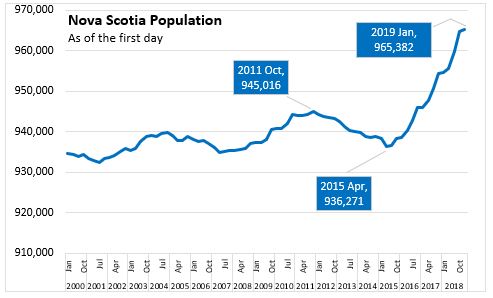
Nova Scotia’s population increased by 689 between October 1 and December 31, 2018. The population as of January 1, 2019 was 965,382, the highest population for Nova Scotia on record. Since April 1, 2015 Nova Scotia's population has increased by 29,111. This quarter's increase reflects an increase in immigrants and net interprovincial migration offsetting the natural population change.
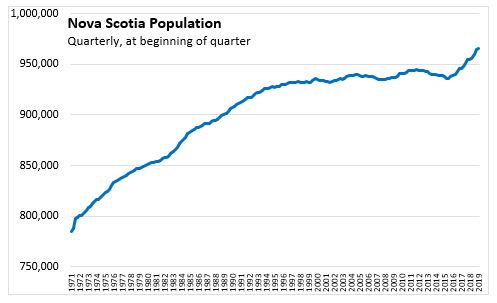
There are seasonal patterns in quarterly population changes, particularly evident in births and international migration. In recent years, the fourth quarter has shown the smallest population growth.

Population growth in Nova Scotia is typically slower than the national average pace. In the last quarter, Nova Scotia’s population increased by 0.07 per cent compared to the October 1 estimate. The national population grew by 0.19 per cent over this period. Compared with January 1, 2018 Nova Scotia’s population has increased by 1.13 per cent, or 10,771, while the national population grew by 1.44 per cent.
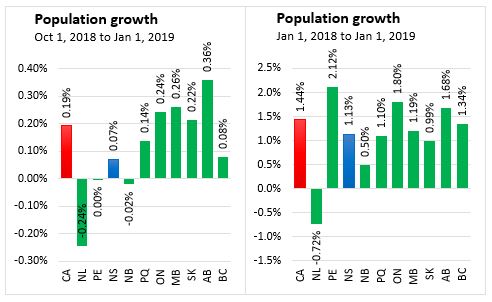
In recent quarters, immigration from other countries has been a strong contributor to population growth in Nova Scotia. Nova Scotia received 1,302 immigrants during the fourth quarter of 2018. This is the highest number of immigrants for a fourth quarter on record.
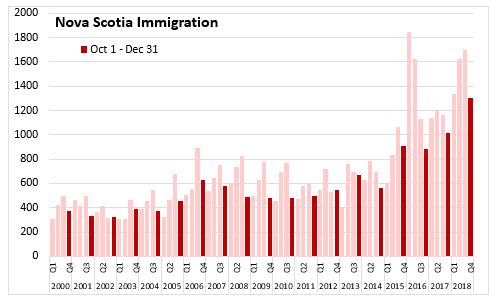
Nova Scotia’s natural population change (the number of births, less the number of deaths) has been negative for several years. Between October 1, 2018 and December 31, 2018, there were 2,093 births and 2,461 deaths, amounting to a natural population decline of 368.
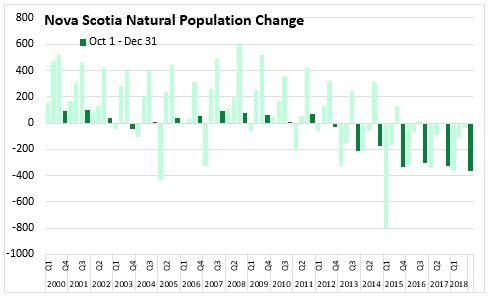
Interprovincial migration has historically shown a net outflow of Nova Scotia's population to other provinces. Recent quarters have shown population growth through interprovincial movements. This quarter, Nova Scotia showed a net inflow interprovincially of 596 persons, with net inflows from six provinces.
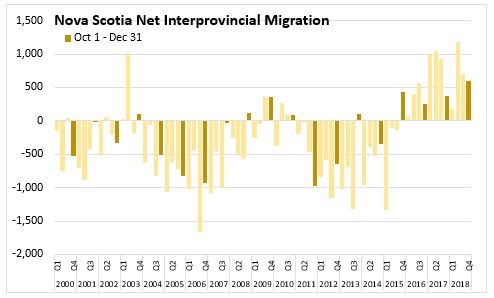
Outmigrants from Nova Scotia to other provinces decreased compared to the fourth quarter of 2017. Out-migration declined to Ontario, Alberta, Newfoundland and Labrador, Quebec and Saskatchewan. Outmigration to British Columbia increased compared to Q4 2017, returning to similar levels seen over 2012-2016 period.
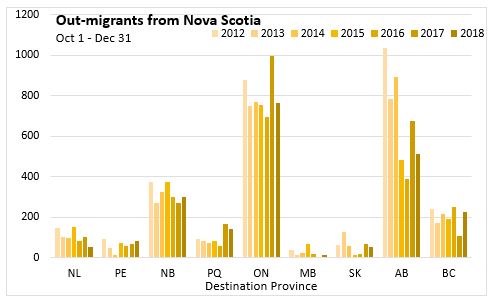
For Q4 2018, in-migrants to Nova Scotia were at similar to Q4 2017 levels. In-migrants from Ontario and New Brunswick remained at similar high levels as Q4 2017. For the fourth quarter, in-migrants from British Columbia in have grown over the past several years while Alberta and Prince Edward in-migrants have trended downwards.
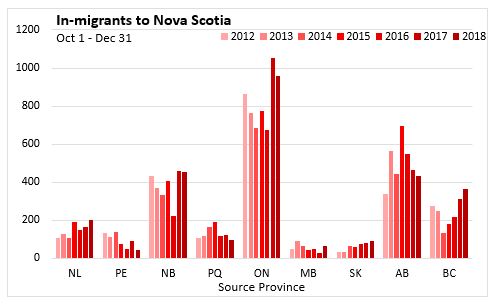
Interprovincial migration to Alberta was a small outflow (79 persons). Three of the last four quarters have seen outflows to Alberta from Nova Scotia. British Columbia and Ontario have shown a larger increase in net migration compared to previous years, a similar situation seen with Newfoundland and Labrador.
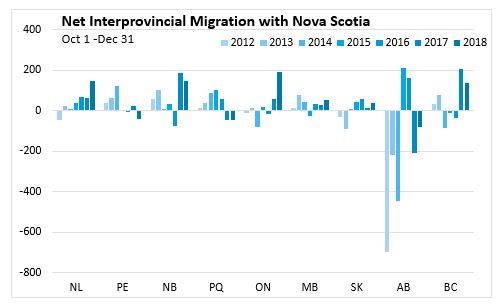
Net non-permanent residents can be a key component of quarterly demographic growth. In this quarter, Nova Scotia saw a net decline of 668 non-permanent residents compared to Q3 2018 (July to September). This quarter typically sees a decline in non-permanent resident population in the province.

Annual January 1, 2018 to January 1, 2019
From January 1, 2018 to January 1, 2019, Nova Scotia's population increased by 10,771. Over the course of the year, the number of deaths continued to outweigh the number of births, resulting in a natural population decline of 891. Since 2008, the natural population change has been on a downward trend. (Note that Statistics Canada releases population estimates as of July 1 of each year, while this analysis provides a four-quarter snapshot of population trends by calendar year.)
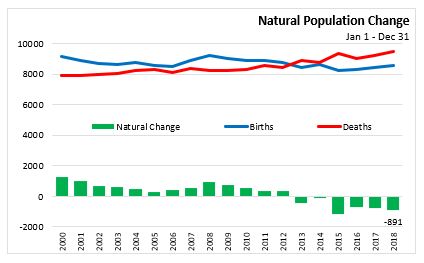
In 2018, Nova Scotia had 15,033 migrants move to other provinces but received 17,687 migrants from other provinces, amounting to positive net interprovincial migration of 2,654. The past three years have seen more interprovincial migrants to Nova Scotia than outmigrants to other provinces. Net international migration in 2018 was 9,008 which is highest level on record back to 1946 with a record levels of immigration (+5,698) and net non-permanent residents (+3,740, data begins 1971).
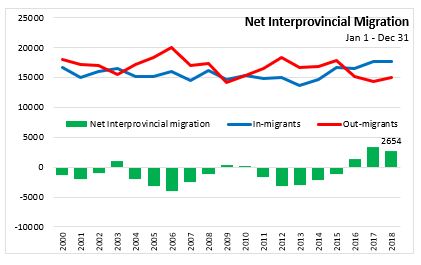
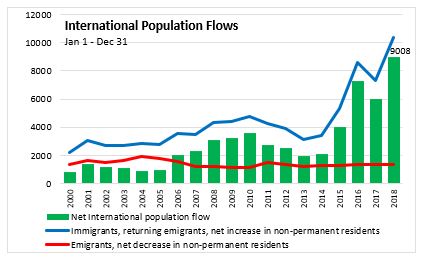
Source:
Quarterly Demographic Estimates, Statistics Canada. Pub 91-002-X (free)
Statistics Canada CANSIM tables: 17-10-0009-01 (Population estimates), 17-10-0020-01 and 17-10-0045-01 (Interprovincial Migrants), 17-10-0059-01 (Births and Deaths), 17-10-0040-01 (International Migrants)
<--- Return to Archive